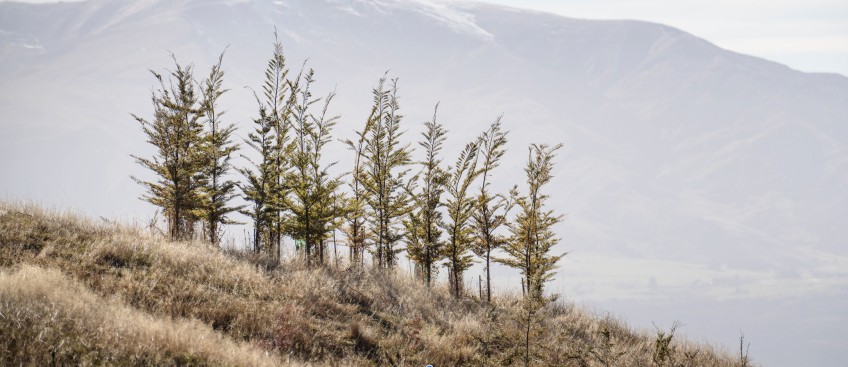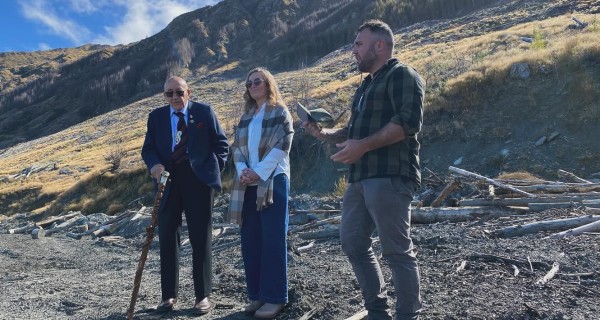Native forest to 'recloak' Coronet mountain range

Following a successful harvest of the Coronet Forest, the contract to 'recloak' the area with natives has now been awarded to Te Tapu o Tāne and e3Scientific Limited.
The project aims to bring back native species of tawhai rauriki (mountain beech), kōwhai, kōhūhū (pittosporum) and kapuka (broadleaf) to the base of the Coronet range, and allow biodiversity to return to the area.
Native planting is expected to start in March 2025 and will take between five to seven years.
The chief executive of Southland and Otago conservation charity Te Tapu o Tāne, Jana Davis, says he's looking forward to a "deafening dawn chorus of taonga manu [native birds]" coming back to the area.
The area used to be home to kiwi, kererū, weka, and tuatara.

Te Tapu o Tāne Ta chief executive Jana Davis showing the moutain off to Tipene O'Regan (Upoko Awarua Runaka) and Paulette Tamaki-Elliffe (Ngāi Tahu head of te reo Māori revitalisation).
"On behalf of all our partners, it is a privilege to be delivering this kaupapa for our hometown...providing access to the largest indigenous reforestation project in the history of the basin.
"The Queenstown community have spent the last few years watching the pine forest come down, it’s going to be great seeing the new direction for the maunga [mountain]."
He thanked Kāi Tahu ki Otago for their support.
QLDC mayor Glyn Lewers says this project is a leading example of how ecological restoration can be successfully achieved within the Otago region and throughout Aotearoa New Zealand.
"Ultimately, this is about creating relationships and connections as we work together to restore and protect our local natural environment for generations to come."
The project will be completed in a partnership between QLDC, Mana Whenua, Te Tapu o Tāne Citycare Property and e3Scientific.
Queenstown Lakes District Council community services manager Ken Bailey says getting rid of all the exotics from Coronet Forest is a "huge win".
“The early harvest was carried out between January 2020 and May 2023, removing over 90,000 tonnes of timber from the site and with it, a major wilding source,” said Mr Bailey.
In total, 172.5 hectares of Douglas fir were removed from the site.

The mountain looking bare after all the exotics have been harvested (Supplied: Jana Davis)
The Coronet Forest was also a significant seed source and a big contributor to the wilding pine problem on neighbouring land.
e3Scientific Managing Director Glenn Davis says he is looking forward to working alongside Te Tapu o Tāne and QLDC to reinstate a beech forest to the slopes of the Coronet Range.
“Coronet Forest stands on the shoulders of a significant network of ecological restoration work that has developed in the district over the last 20 years,” he said.
“These projects have provided the ecological community with the skills, expertise and confidence to reinstate local biodiversity at a landscape scale.”
He says his organisation's role is to bring together and impart their knowledge of the area to maximise the performance of the planting.
Those involved plan to hold workshops with the community over the next 12 months.
The area at the base of Coronet was an important place for mahinga kai and has links to the Ngai Tahu Rūnanga.
The council is also providing updates for the project online at www.qldc.govt.nz/coronet-forest.


























